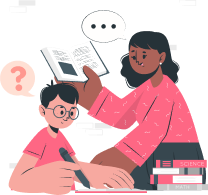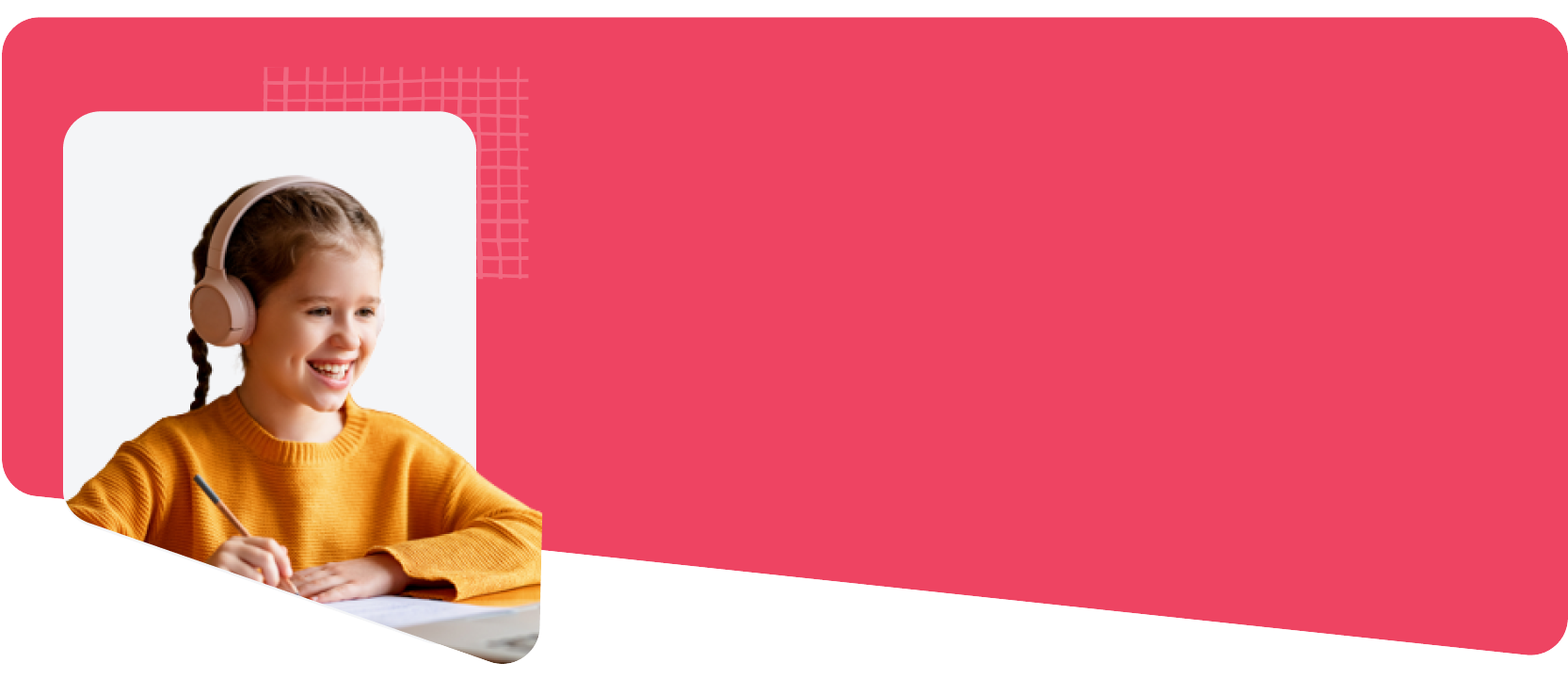Reading is a journey, and every journey begins with the first step. For young learners, that step often involves mastering sight words. These small but mighty words are everywhere in early reading materials, and recognizing them instantly can make a world of difference in your child's reading experience.
But what if your child struggles to remember these words? It's a common challenge. Many sight words don't follow standard phonetic rules, making them tricky to sound out. Instead, children learn to recognize them by sight, which helps them read more smoothly and with greater confidence.
In this guide, we'll explore what sight words are, why they're essential for your child's reading development, and how you can support your young reader in mastering them. Let's embark on this reading adventure together!
TLDR
-
Sight words are common words that children should recognize instantly without having to sound them out. Examples include "the," "and," and "it."
-
These words are high-frequency, often irregular in spelling, and are crucial for reading fluency and comprehension.
-
Teaching sight words boosts reading fluency, improves comprehension, and builds confidence in young readers.
-
Includes high-frequency words, non-phonetic words, Dolch sight words, and Fry sight words.
-
Use flashcards, games, movement, technology, and positive reinforcement to make sight word learning fun and effective.
What Are Sight Words?
Sight words are common words that young readers are encouraged to recognize instantly, without having to sound them out. These words often appear frequently in texts, making them essential for reading fluency.
Characteristics of Sight Words
-
High Frequency: Sight words are among the most commonly used words in the English language, appearing frequently in texts.
-
Irregular Spelling: Many sight words don't follow standard phonetic rules, making them challenging to decode.
-
Function Words: They often include pronouns, prepositions, conjunctions, and common verbs, which are essential for sentence structure.
Understanding these characteristics can help you support your child's journey in mastering sight words, paving the way for smoother and more confident reading experiences.
Now that you understand what sight words are, let's explore why teaching them is crucial for your child's reading development.
Why Should You Teach Sight Words?
Teaching your child sight words is essential because these words make up a significant portion of early reading materials. When your child recognizes these words instantly, it allows them to read more smoothly and with greater confidence. This foundational skill supports overall literacy development and fosters a love for reading.
Key Reasons to Teach Sight Words:
-
Enhances Reading Fluency: Recognizing sight words quickly allows your child to read more smoothly. This fluency helps them focus on understanding the story rather than getting stuck on individual words.
-
Improves Comprehension: When your child doesn't have to stop and figure out every word, they can focus on understanding the meaning of the text as a whole.
-
Builds Confidence: Mastering sight words gives your child a sense of accomplishment and encourages them to continue reading and learning.
-
Supports Writing Skills: As your child becomes familiar with sight words, they can use them in their writing. This practice not only improves their writing but also reinforces their reading skills.
-
Aids Speech Development: Recognizing and using sight words can improve your child's ability to understand and produce words. Exposure to these words helps build vocabulary and enhances overall communication skills.
-
Introduces Them to English Phonetics: While many sight words don't follow standard phonetic rules, learning them exposes your child to the complexities of English spelling and pronunciation. This awareness can support their understanding of phonics and improve their ability to decode unfamiliar words.
By teaching sight words, you're laying the groundwork for your child's reading success, making learning to read a more enjoyable and rewarding experience.
Now that you understand why sight words are crucial for your child's development, let's explore the different types of sight words they will encounter on their learning journey.
Want to boost your child’s reading speed and confidence? Book your free trial class today!
Also Read: Understanding Reading Milestones: When and How Kids Learn to Read
What Are the Types of Sight Words?
Understanding the different types of sight words can help you support your child's reading journey more effectively.
-
High-Frequency Words: These are words that appear most often in written English. Examples include "the," "and," "it," and "you." Learning these words is crucial as they make up a significant portion of early reading materials.
-
Non-Phonetic Words: These words don't follow standard phonetic rules, making them difficult to sound out. Examples include "was," "said," and "where." Children are encouraged to memorize these words to recognize them instantly.
-
Dolch Sight Words: Developed by Dr. Edward Dolch in the 1930s, this list includes 220 "service words" and 95 high-frequency nouns. These words are commonly used in children's books and are divided by grade levels, from pre-kindergarten to third grade.
-
Fry Sight Words: Created by Dr. Edward Fry in the 1950s and updated in 1980, this list contains 1,000 words based on their frequency in reading materials for grades 3–9. The Fry list includes words like ever, since, dog, room, etc.
By familiarizing yourself with these types of sight words, you can better assist your child in recognizing and mastering them, paving the way for improved reading skills.
List Of Some Sight Words For Your Children
|
Who |
So |
Here |
Has |
Thank |
|
Eat |
Can |
Had |
Like |
Up |
|
His |
Be |
Out |
From |
Always |
|
Why |
Us |
Around |
Some |
Said |
|
But |
Many |
Know |
Me |
Yes |
|
About |
Of |
Much |
Is |
It |
|
Also |
Her |
Big |
Do |
Down |
|
With |
We |
By |
Nice |
Never |
|
He |
In |
Please |
Help |
Give |
|
Pretty |
When |
Did |
Any |
Was |
|
Very |
They |
How |
Have |
I |
|
Say |
To |
Not |
Them |
Come |
|
On |
May |
There |
Our |
Are |
Now that you understand the different types of sight words, let's explore some strategies to help your child master them with ease.
Also Read: Embracing the Art of Short Fiction: A Guide to Reading Stories
How to Teach Sight Words to Your Child
Teaching your child sight words doesn't have to be a daunting task. With a bit of creativity and consistency, you can make learning these essential words both effective and enjoyable.
Here are some strategies to help your child master sight words:
1. Start with a Small Set
Begin with a manageable number of words, three to five at a time. Introduce each word individually, using flashcards or a whiteboard. Show the word, say it aloud, and have your child repeat after you. This focused approach helps prevent overwhelm and ensures better retention.
2. Implement the "See & Say" Technique
Show your child a sight word flashcard, have them say the word aloud, and then trace it with their finger while repeating the word. This multisensory approach combines visual, auditory, and tactile inputs, reinforcing the word in their memory.
3. Make Learning Interactive
Engage your child with fun activities that reinforce sight word recognition. Games like Bingo, memory matching, or scavenger hunts can make learning playful and effective. For example, you can hide sight word cards around the house and have your child find and read them aloud.
4. Incorporate Movement
Combine learning with physical activity to keep your child engaged. Create a hopscotch grid with sight words, and as your child hops to each word, they read it aloud. This approach caters to kinesthetic learners and adds an element of fun.
5. Incorporate Technology
Utilize educational apps and websites designed to reinforce sight word recognition through interactive games and quizzes. These digital tools can make learning more engaging and provide instant feedback, helping your child to stay motivated and track their progress.
6. Create a Sight Word Wall
Designate a space in your home to display sight words your child is currently learning. Regularly reviewing these words together can reinforce memory and make learning a part of your daily routine.
7. Engage in Shared Reading
Read books together that include the sight words your child is learning. Point to the words as you read aloud, encouraging your child to recognize and say them. This practice helps connect the words to their meanings and improves reading fluency.
8. Incorporate Rhythmic Chanting or Singing
Setting sight words to a simple tune or rhythm can make them more memorable. For instance, you might create a short song using the words "the," "and," and "it." Children often find it easier to recall words they've sung or chanted, as the melody aids in memory retention. This approach taps into auditory learning and can make the process more enjoyable.
9. Practice with Word Sorts
Engage your child in sorting sight words into categories based on similarities, such as by vowel sounds or word families. This activity encourages them to notice patterns and relationships between words, enhancing their understanding and memory.
10. Celebrate Progress
Acknowledge and celebrate your child's achievements, no matter how small. Positive reinforcement boosts confidence and motivation. Consider creating a "Sight Word Superstar" chart where your child can add a sticker each time they master a new word.
Remember, patience and encouragement are essential. Every child learns at their own pace, so celebrate the journey and the milestones along the way.
Final Thoughts
Mastering sight words is a crucial step in your child's reading journey. These high-frequency words, often not adhering to standard phonetic rules, are essential for reading fluency and comprehension. By incorporating consistent practice and engaging activities, you can support your child in recognizing these words instantly, leading to smoother and more confident reading experiences.
If you're looking for a structured and engaging approach to improve your child's reading skills, consider exploring the FunFox Program. We offer online tutoring programs specifically designed for students in grades 1 to 8. Our small-group classes on Zoom, led by experienced teachers, provide personalized attention to each student.
FunFox's Readers Club is designed to help children develop foundational reading skills, including fluency and comprehension. Through interactive lessons and engaging activities, your child will gain the confidence to tackle any text.
So, are you ready to take the next step in your child's reading journey? Register for a free trial class today and experience how our innovative programs can make learning enjoyable and impactful.
FAQs
1. Why start with sight words early?
Memorizing these common words helps beginning readers read more fluently and focus on understanding text, since many beginner texts contain up to 50–75 % sight words.
2. Are sight words a replacement for phonics?
No. Sight word instruction complements phonics. Phonics teaches decoding skills, while sight words help with the irregular, high‑frequency words that phonics may not cover.
3. Do sight words help with speech development?
Yes. Instant recognition of common words supports clearer speech and helps children use them correctly in conversation.
4. How can I assess if a child truly knows a sight word?
Check if they can read the word quickly and accurately in isolation and in context. Automatic recognition with minimal hesitation indicates mastery.
5. Why are sight words sometimes called "service words"?
They’re termed service words because they help reading flow smoothly, being high-frequency connectors that support comprehension and fluency.















